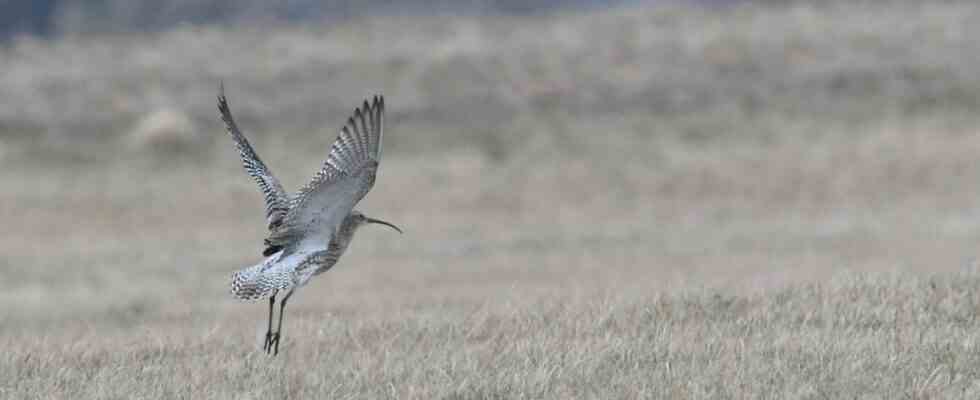It is a sensation that Simon Weigl from the State Association for Bird Protection reports – definitely for bird watchers and nature conservationists: Curlews have gathered on the grounds of the Fürstenfeldbruck air base and they are preparing to breed. Ten of the big snipe birds can be counted on Thursday between the BMW test track and the Maisacher bypass. Some show courtship flights. Others may move on. Weigl looks enthusiastically through his binoculars. “It’s so nice to see her,” he says.
The curlew bred at the air base up to 15 or 20 years ago, reports the biologist and managing director of the state association for bird protection in the district. Then the birds disappeared. And now it looks like they’re not only returning, they’re also planning to breed. Because you can also hear the fluting, trilling song with which the males mark their breeding territory. Weigl also points out the characteristic figures of courtship flight. He is an expert on the birds, of which there are only around 500 breeding pairs left in Bavaria. They are very much in danger of extinction; their stock is declining.
In the past, just 100 years ago, hundreds of thousands of them were out and about, says Weigl. That has changed dramatically. “I spend five hours every week just trying to save the curlews from extinction.” Like so many other animals, the buzzard-sized birds with the characteristic long, curved beak are disappearing because their habitat is being destroyed – the species-rich, extensive meadows.
According to Weigl, 96 percent of these areas have already disappeared in Germany due to intensification or conversion to building land. They are among the most species-rich habitats in Europe. In it, Weigl compares them to the rainforests. In such meadows there are numerous insects, snails and worms, which the curlews poke out with their beaks.
Extensive meadows please curlews. The areas at the air base have become attractive again. But now part of the site is to be built on.
(Photo: Günther Reger)
“Curlews need a lot of space,” explains Weigl. If forests, hedges, bushes or buildings get too close to the breeding territory, the pair will leave it. The danger that a predator could sneak up on the nest then seems too great to them. Some of the meadows on the air base area were extensified as part of a compensatory measure, which is obviously good for the curlews. As far as he knows, they have only returned to an area from which they had disappeared twice in Bavaria, says the conservationist. Once, a few years ago, in Ampermoos. And now at the air base.
This shows that the area is fairly intact. That is why there is also one of the largest occurrences of skylarks “far beyond the district”. They, too, are actually commonplace birds that have become rare. Their requirements are similar to those of the curlews – they need sufficient insects and other small animals for food and 100 to 200 meters from structures where predators might be hiding. Otherwise they won’t even try to breed.
The female curlew usually lays four eggs in the nest hollow that the male has scratched. It is only lined with a bit of hay.
(Photo: imago stock&people)
Despite all the joy, Weigl is very worried. He fears the birds’ presence may be short-lived. Because a large part of the air base is an FFH area and is therefore under nature protection under European law. In the northwest, however, there is a seven-hectare site that is not under protection and is to be built on. Apartments and a sports area with floodlights are to be built.
The animals got used to the passing cars, he explains. A floodlight system, however, is “extremely critical”, not only as a disruptive factor for curlews. The light also attracts masses of insects, which then die from the headlights. According to Weigl’s assessment, such a system would have negative effects on the entire air base. “I consider the endangerment of an FFH area for leisure use to be extremely questionable,” he says. “Do you really have to put a sports facility in here?”

